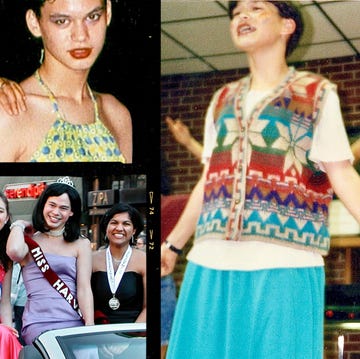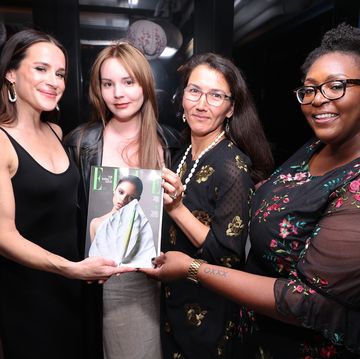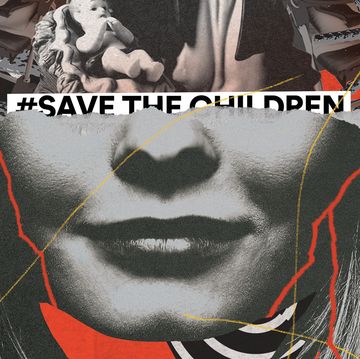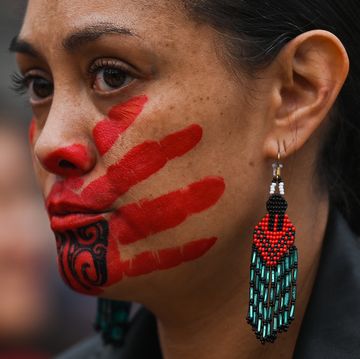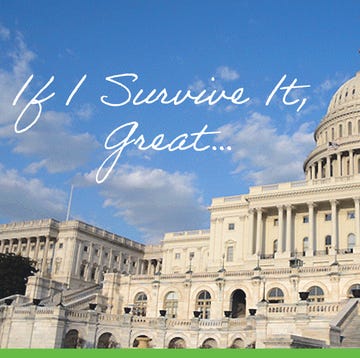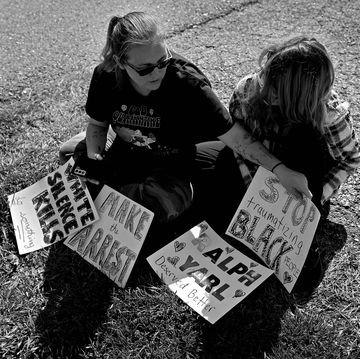When Xiye Bastida was 13, her family had plans to move to the United States from their small Mexican town of San Pedro Tultepec. Her parents, longtime environmental activists, had lined up yearlong appointments at New York City’s Center for Earth Ethics. But the day before their flight, rainfall flooded their drought-weary town, including spillover from heavily polluted lagoons and rivers. “On my last day, I was with my best friend,” Bastida says. “We were driving her to meet her mom, but we couldn’t get out because all of downtown was flooded.” Eventually they escaped, but the experience stayed with her. “I remember the pain of leaving without knowing what happened. It’s a town of 10,000 people, with little to no government assistance,” she explains.
Thankfully, the town recovered, though it continues to suffer from many of the same pollution issues. While her family wound up staying in New York long-term, she goes back often to visit extended family—she’s calling from there today, on break from her studies as a 20-year-old junior at the University of Pennsylvania, double majoring in Environmental Studies with a concentration in Policy and Latin American Studies.
As young people have emerged as the leaders of today’s climate movement, Bastida has been at the forefront, from leading the first big student climate strike in NYC at 17 to co-founding Re-Earth Initiative, a youth-led organization that supports communities directly dealing with environmental restoration, a year later. “Re-Earth is about to turn three years old, and we just got our first big, million dollar grant,” she says. “We’re donating half to a specific project and one-quarter to various community projects. We see all of these donations going through the environmental space, but less than 1 percent go to women, and only a little more than half a percent makes it to indigenous communities. We see all of these disparities with funding, and I think that it’s time to support people who are already implementing the climate solutions in their communities.”
As a young girl in Mexico, she remembers going on hikes and falling in love with the animals she saw. But with age, she’s felt an increasing level of responsibility for shaping the future. “I wanted to become a veterinarian, and I got very serious about it,” she says. “I was going to go to University of California-Davis, and learn multiple languages so I could travel and work in different clinics.
But about a year or two after moving to the U.S., I remember telling my mom ‘Being a veterinarian would make me happy, but my generation doesn’t have the choice of picking jobs that would make us happy. We have the responsibility to pick a job that betters the world.’ I also had the realization that I couldn’t wait to grow up to do something about the climate crisis. The flood in my hometown helped me come to the conclusion that the climate crisis is happening now.”
On what inspires her to keep going
“Somebody said this to me once, and it’s so obvious, but it really did fill me with so much purpose. If we want to see the future, we just have to look at the decisions we make today. It’s simple cause and effect, but it showed me that every single thing that I do is [going to impact] what the future is going to look like. Everything we do collectively is a little window into the future. So what inspires me is seeing that future, looking out that window. In 2050, I’m going to be 48 years old. My mom is 48 right now, and she has two kids. When I’m 48, I want to have kids, too.
“What keeps me going is this hope that my kids will have the same connection to nature that I have and that my grandparents had. That idea of generational responsibility comes from indigenous cosmology. My hometown is part of the Otomi Toltec indigenous community. The seven-generation principle is prevalent in indigenous culture in Mexico, but also around the world. We have to take all seven into account—what our parents, grandparents, and great grandparents are telling us, and what future we’re securing for our children, grandchildren, and great-grandchildren.”
On her career goals
“In five years, I want to grow Re-Earth Initiative to a point where we’re able to fund environmental restoration projects all around the world—and ones that are not invasive or greenwashing schemes like offsetting. I wish that was what the big environmental orgs did, but I’m not seeing that. So I think it’s time to take it into our own hands to fundraise the money and distribute it and make sure it makes it to the ground. In my personal journey, I’m just going to keep organizing climate strikes, and get into more policy and legislation, and push things on that front.”
The moment from her time in climate activism that amazes her to this day
“I still cannot believe that Fridays for Future New York City was able to organize 300,000 people in 2019 to come out to the streets. That has been the most amazing thing I’ve ever been a part of. I hope the movement grows to a point where we are able to work on different fronts. Striking for public pressure, but then also mobilizing from the inside. When I started organizing, I was 15, but I’m 20 now. We’re all growing up and entering the workplace and getting jobs in policy, the agriculture sector, the energy sector, and we’re going to start changing all of these industries. I think we have to keep that same mindset of organization, but within industries and institutions.”
On what she hopes her biggest impact will be
“I want to be a role model for young women and girls who want to change the world. If my parents hadn’t told me they supported me in doing anything I wanted to do want with my life, I don’t think I would be in the position where I am today. If we want to inspire people, we need to tell them that we believe in them. That does not happen nearly enough with young girls. I want to be an example that it’s possible to choose a path in life that is for the betterment of the world. I also want to make the climate space focus more on intersectionality and justice. In the past, the climate movement focused on protecting parks or areas that cage nature. We can’t keep separating ourselves from nature. We need to protect frontline communities from pollution.”
On the importance of intergenerational cooperation
“During our first climate strikes, our posters would say, “You’re stealing my future” or “It’s your fault.” But that generational divide only widens the gap of collaboration and possibilities further. [Young people] don’t have the economic power or political influence or tools to change anything. What we have is our social pressure, but we’re striking so that we can be invited into these spaces and actually have the hard conversations with people in positions of power. In my eyes, my parents didn’t cause the climate crisis. My grandparents didn’t cause the climate crisis. It was caused by a very small number of people and industries, like the fossil fuel industry, which puts millions of dollars into misinformation campaigns to make people doubt the climate crisis.
“When it comes to movement building, we think that we are reinventing the wheel. So many times when we do direct action, we’re like, ‘Oh, what a good idea. We’re going to block this road or organize a protest at school.’ But all of these things have been done before. The Civil Rights movement and the women’s movement used the same tactics. Learning from our elders will allow us to be more efficient because we won’t have to come up with everything from scratch. It’s just one of the most crucial things that I think we are missing.”
What she wishes she knew before getting into this line of work
“I wish I knew that my whole life was going to change in terms of activism being an everyday thing. Most of it is things that people don’t see—writing emails and press releases, being on Zoom calls or in meetings for hours and hours organizing and strategizing. It takes so much away from your life. I left gymnastics, I stopped doing creative writing, I stopped reading as much as I used to, but I don’t want a life where I don’t pursue hobbies and passions and things that bring me joy. So I am now consciously including time with family and friends and going to the gym.
“There’s this quote that I love that says, ‘how you spend your days is ultimately how you spend your life.’ I want my life to be one where I am proud of not only what I did, but also how I lived. If we’re going to be in this work for the long haul, we have to make sure that we don’t exclude the things we’re fighting for, like joy.”
A version of this story appears in the April 2023 issue of ELLE.
Melissa Giannini is the features director of ELLE.






